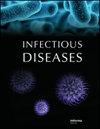Changes over time in the Chlamydia trachomatis serotype distribution in Finnish women.
Scandinavian Journal of Infectious Diseases
Pub Date : 2014-05-01
Epub Date: 2014-02-11
DOI:10.3109/00365548.2013.878031
引用次数: 7
Abstract
The distribution of Chlamydia trachomatis serotypes in the sexually active population may change over time. Serum from C. trachomatis seropositive women representing the 1980s, 1990s, and 2000s were available from a stratified random sample (11,067) of the Finnish Maternity Cohort for microimmunofluorescence-based classification. The C. trachomatis serotype distributions in the 1980s and 2000s were comparable, with serotypes G, E, and J being the most prevalent. In the 1990s the numbers of women seropositive for ≥ 2 serotypes peaked, and serotypes G/J were replaced by serotypes E/D. The temporary C. trachomatis serotype replacement parallels changes in the sexually active population in the 1990s in Finland.
芬兰妇女沙眼衣原体血清型分布随时间的变化。
沙眼衣原体血清型在性活跃人群中的分布可能随时间而改变。从芬兰产妇队列的分层随机样本(11067人)中获得1980年代、1990年代和2000年代沙眼衣原体血清阳性妇女的血清,用于微免疫荧光分类。1980年代和2000年代沙眼衣原体血清型分布具有可比性,以G、E、J血清型最为流行。20世纪90年代,妇女血清≥2种血清型阳性人数达到高峰,G/J血清型被E/D血清型所取代。临时的沙眼衣原体血清型替换与20世纪90年代芬兰性活跃人群的变化相似。
本文章由计算机程序翻译,如有差异,请以英文原文为准。
求助全文
约1分钟内获得全文
求助全文

 求助内容:
求助内容: 应助结果提醒方式:
应助结果提醒方式:


